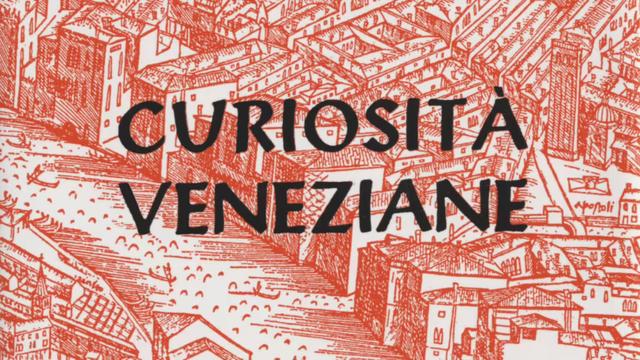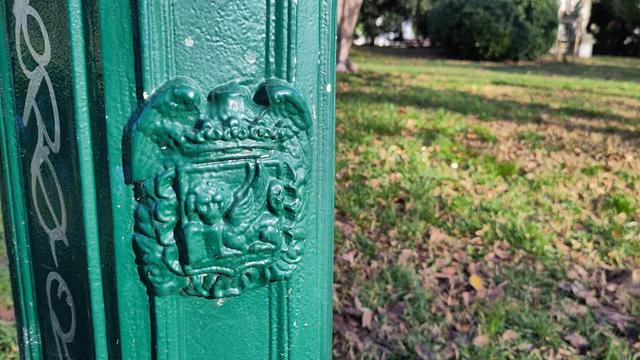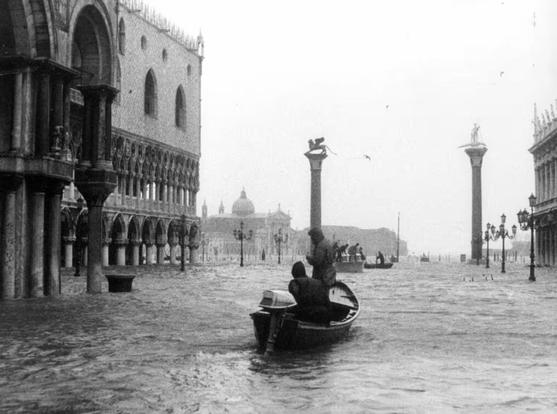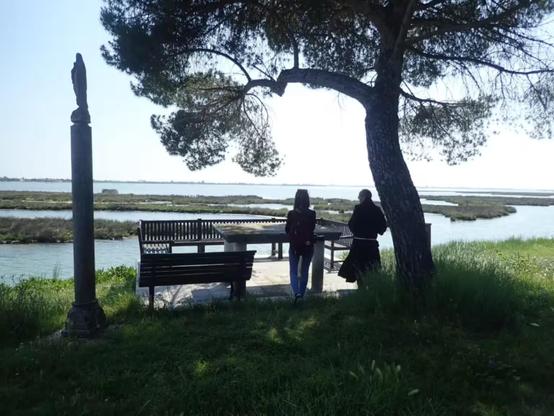The decline of Venice didn’t end with the loss of statehood. Attempts at modernising Venice have failed, and the result is an economic monoculture of mass tourism, and a constant demographic decline.
#AustrianDomination
The 1600s and 1700s were a period of slow decline for Venice, until the Republic of Venice fell to Napoleon in 1797.
Elephanticide
On the side of the deconsecrated church of Sant'Antonin in Castello, there is something which looks like an odd bricked up opening, but it doesn't really look like a window nor a doorway.
The opening was made on March 16th, 1819, with the permission of the Patriarch, because of a slight problem with an elephant.
#Curiosities #AustrianDomination #Carnival #Elephants #Entertainment #OTD #Venezia #Venice
Read more here: https://historywalksvenice.com/venetian-story/elephanticide/
Austrians entered Venice
OTD in 1798, Austrian troops entered Venice.
The short dream of a democratic republic was dead, killed by the same Napoleon who had instigated if.
Venice wouldn't be independent again for another fifty years.
#HistoricalEvents #AustrianDomination #OTD #Venezia #Venice
Read more here: https://historywalksvenice.com/2025/01/austrians-enter-venice/
Giuseppe Tassini — a human giant
One of the books about Venice, I use the most, is the Curiosità Veneziane by Giuseppe Tassini.
It is a small lexicon of placenames in Venice. Well, most printed copies are small, but the book contains over 1400 entries, and it is 700–800 pages in most editions.
The Curiosità Veneziane is, however, much more than a lexicon.
The entries explain why the place is called what it is, and often also who lived there, or the crafts which worked there, with the history and notes about the guild. If the place appears in ancient laws or in the raspi — the criminal records of the Republic of Venice — we'll learn about murders, slaves, intrigues, fires, robberies, or about which courtesans and artists frequented which taverns.
#Venetians #AustrianDomination #Translations #Venezia #Venice
Read more here: https://historywalksvenice.com/venetian-story/giuseppe-tassini-a-human-giant/
A headless eagle
Walking my dogs in the nearby Giardini Pubblici (or Giardini Napoleonici as they're also called), my eyes fell on one of the many lampposts.
I've seen them a many times. I walk there several times every day.
They're of cast iron, painted bright green, with some floral designs on them, half obscured by many layers of paint. Close to the base is a coat of arms with the Lion of St Mark, which is on everything the Municipality of Venice makes.
No surprises there.
Then I looked closer at the lion because something was a bit off.
Surrounding the coat of arms with the winged lion is a floral pattern, something that could be a crown, and … a pair of extra wings.
The coat of arms itself had wings.
The dogs had wandered off at this point, doing whatever dogs do when you don't look.
#Curiosities #AustrianDomination #Lampposts #UnificationOfItaly #Venezia #Venice
Read more here: https://historywalksvenice.com/2024/12/a-headless-eagle/
Daghe adosso, Nino!
An Austrian admiral giving orders in Venetian, in a naval battle against Italy, which eventually led to Venice becoming Italian
#AustrianDomination #Fascism #OTD #UnificationOfItaly #Venezia #Venice
Read more here: https://historywalksvenice.com/social-media/daghe-adosso-nino/
Modern Venice
After the end of the Republic of Venice, the city has been under a series of different foreign states.
Venice was under Austrian-Hungarian control 1798--1805, then under Napoleonic rule in the period 1805--1815. After the Congress of Vienna, Venice was returned to the Habsburgs of Austria.
It remained under Austria — in the form of an Austrian controlled Kingdom of Lombardy–Venetia — until 1866, with a brief interlude in 1848--1849 with the revolutionary Venetian Democratic Republic.
Since 1866, Venice has been part of Italy — initially under the Kingdom of Italy, which included the fascist period, and then under the Republic of Italy from 1948 until now.
#ModernVenice #AustrianDomination #KingdonOfLombardyVenetia #UnificationOfItaly #Venezia #Venice
Read more here: https://historywalksvenice.com/article/modern-venice/
Daghe adosso, Nino!
An Austrian admiral giving orders in Venetian, in a naval battle against Italy, which eventually led to Venice becoming Italian
#ModernVenice #MonumentsGreatAndSmall #AustrianDomination #Fascism #UnificationOfItaly #Venezia #Venice
San Francesco del Deserto
San Francesco del Deserto, in the Venetian lagoon, is home to a Franciscan monastery since 1228, with only some short interruptions.
#TheVenetianLagoon #AustrianDomination #FrenchDomination #LagoonIslands #Monasteries #Venezia #Venice
https://historywalksvenice.com/article/the-venetian-lagoon/san-francesco-del-deserto/
Strada Nova – the end
The Strada Nova was not a single project but rather a series of incremental changes which became the start of mass tourism in Venice
#HistoricalEvents #StradaNova #AustrianDomination #Venezia #Venice
From SS Apostoli to Rialto
Strada Nove #7: The part of the Strada Nova between Campo SS Apostoli and Rialto has seen comparably fewer changes, just a bit here and there
#HistoricalEvents #StradaNova #AustrianDomination #Venezia #Venice
https://historywalksvenice.com/2023/11/from-ss-apostoli-to-rialto/
Santa Sofia
Strada Nove #6: The Strada Nova at Santa Sofia ploughs through the old city of Venice, without any regard for the city or its people.
#HistoricalEvents #StradaNova #AustrianDomination #Venezia #Venice
Santa Fosca and San Felice
Strada Nove #5: The parts of the Strada Nove around Santa Fosca and San Felice only exist thanks to numerous demolitions of common people’s houses
#HistoricalEvents #StradaNova #AustrianDomination #Venezia #Venice
https://historywalksvenice.com/2023/10/santa-fosca-e-san-felice/
Due Ponti and l’Anconeta
Strada Nove #4: Due Ponti and l’Anconeta were well known localities in Venice in the 1700s and earlier, but now both places are long gone.
#BuildingsPalacesAndChurches #HistoricalEvents #StradaNova #AustrianDomination #Venezia #Venice
https://historywalksvenice.com/2023/09/due-ponti-and-lanconeta/
Rio di San Leonardo
Strada Nove #3: The Rio di San Leonardo was interred in 1818, ostensibly for economic reasons, even though the locals complained.
#HistoricalEvents #RioTerà #StradaNova #AustrianDomination #RioTerà #Venezia #Venice
Rio del Isola
Strada Nove #2: Rio del Isola was a canal in Venice which was filled in and joined up with the Lista di Spagna to form the start of the current Strada Nova
#HistoricalEvents #RioTerà #StradaNova #AustrianDomination #RioTerà #Venezia #Venice
Santa Lucia – church, monastery and railroad station
Strada Nove #1: Where there railroad station Santa Lucia is today once stood two churches (Santa Lucia and Corpus Domini), two monasteries and much more
#BuildingsPalacesAndChurches #HistoricalEvents #StradaNova #AustrianDomination #KingdonOfLombardyVenetia #ScuolaDeiNobili #Venezia #Venice
https://historywalksvenice.com/2023/09/santa-lucia-church-monastery-and-railroad-station/
Strada Nova – from the Station to Rialto
Venice changed from a city which primarily existed for its inhabitants to a city dominated by tourism, and the Strada Nova was the first step.
#HistoricalEvents #StradaNova #AustrianDomination #KingdonOfLombardyVenetia #Venezia #Venice
https://historywalksvenice.com/2023/09/strada-nova-from-the-station-to-rialto/
Bridges in Venice
If everything is old in Venice, then what about the bridges? Well, surprise, most of them are not. In fact, 3/4 of the bridges are modern.
#BuildingsPalacesAndChurches #HistoricalEvents #AustrianDomination #Bridges #Fascism #VenetianState #Venezia #Venice #WingedLion




